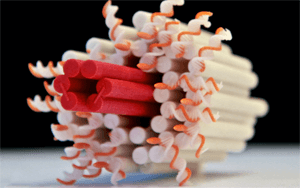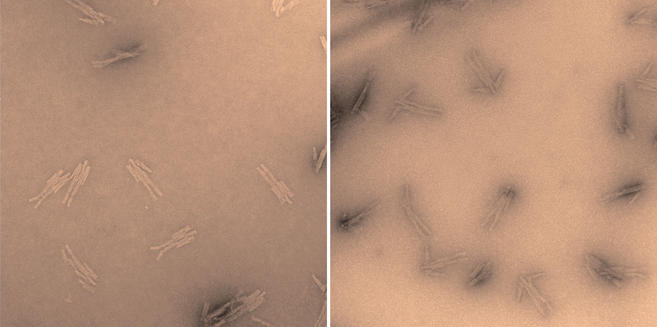Shape-Shifting DNA Devices Show Promising Future for Nanotechnology

Researchers from Technische Universität München have created reversible DNA structures taking advantage of the weak DNA stacking interactions. The authors created devices such as a nanorobot and a pair of nanoscissors that could change their conformation by switching the temperature of the salt concentration. This advance in DNA nanotechnology, published in Science, paves the way for building nanomachines relevant in the biomedical field.
DNA origami, the folding of DNA into desired shapes, is more than twenty years old. However, the structure construction relied on the extremely stable DNA base-pairing (A-T, G-C). This stability turned out to be a problem when trying to configure nanomachines with moving or flexible parts, a major drawback if the final objective is to construct structures that are up to pair with the molecular nanomachinery of the cell. Gerling et al. have solved that problem by producing 3D DNA components that assemble on the basis of shape complementarity and without base pairing. Instead, the components assemble by the nucleobase stacking bonds that allow DNA to fall into the evenly spaced double-helix structure. By changing cation concentration or temperature, the researchers could finely tune the attractive or repulsive stacking forces, thus changing the conformation of the assembled parts.
These reconfigurable DNA structures are the starting point for building nanodevices with the potential of specific drug delivery or controlled function of single molecules.
Sources:
http://www.sciencemag.org/content/347/6229/1446.abstract?sid=49ffa4de-14ff-4f95-994a-f7447838a9e1
http://www.sciencemag.org/content/347/6229/1417
https://cosmosmagazine.com/life-sciences/nanorobots-made-dna

